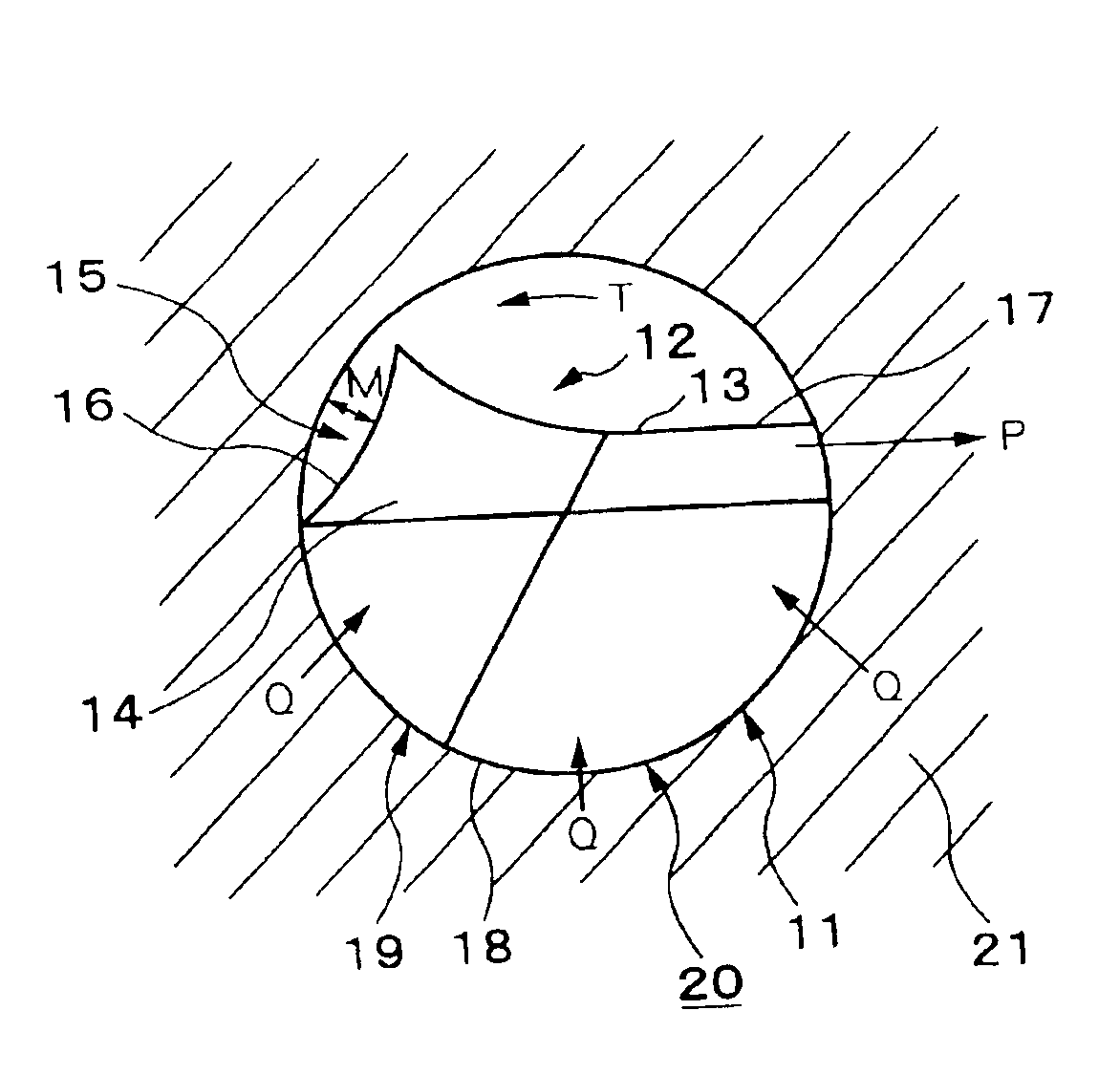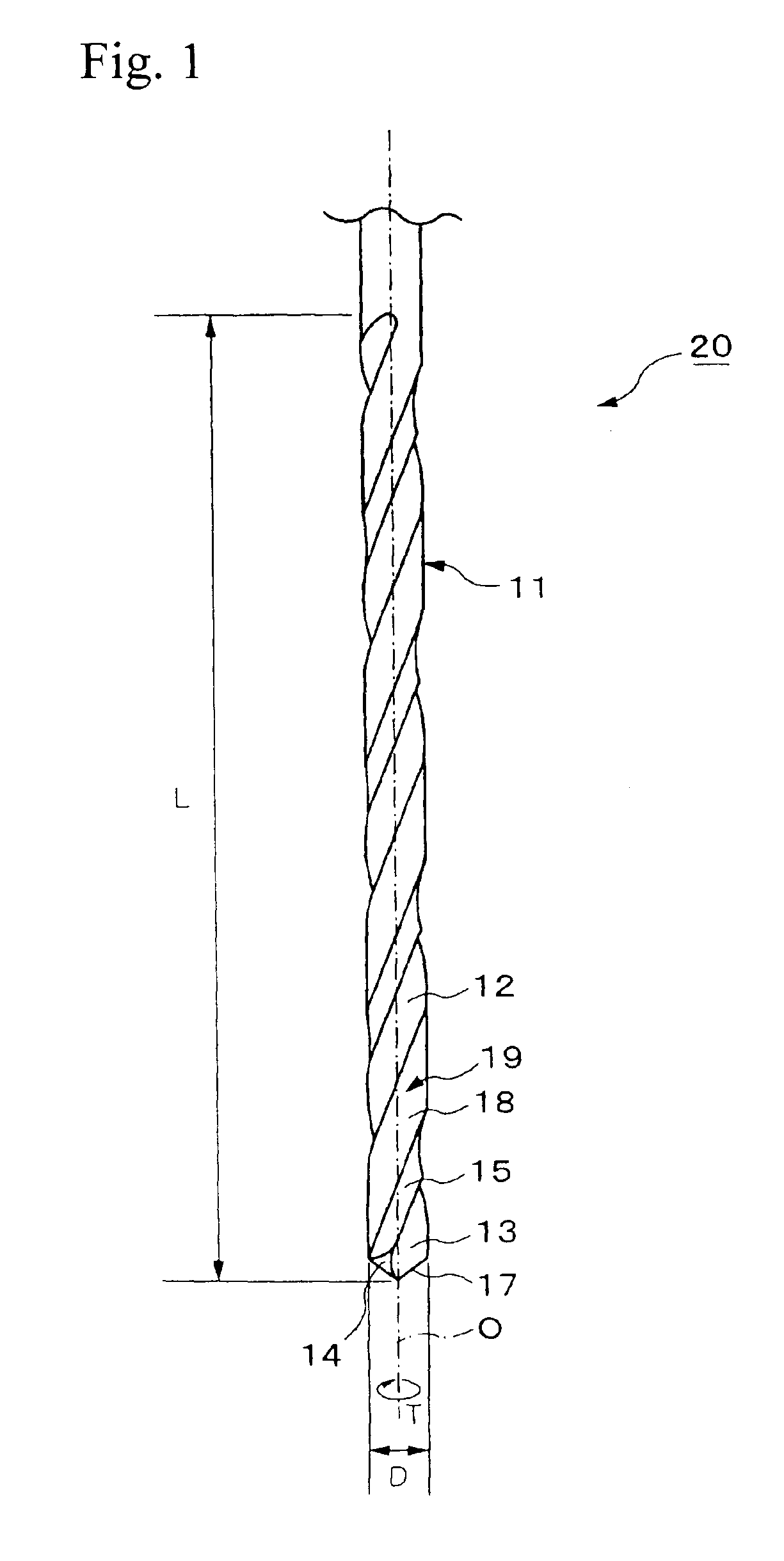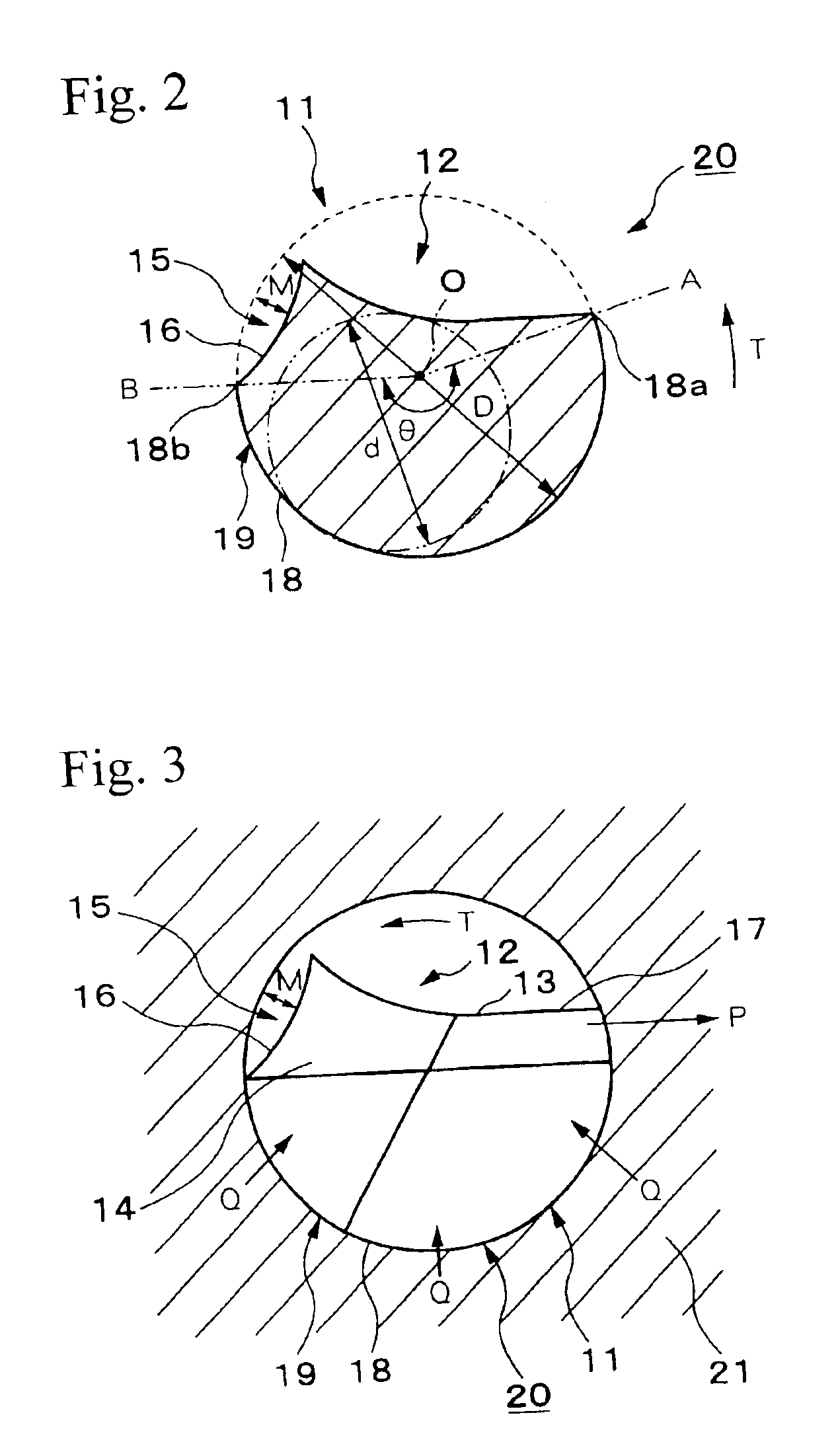Small drill
a small drill and drill bit technology, applied in the field of cutting tools, can solve the problems of reduced accuracy of hole position, low hole-forming speed, and possible cutting portion breakage, and achieve the effect of improving the ability of small drill bit and sufficient position accuracy
- Summary
- Abstract
- Description
- Claims
- Application Information
AI Technical Summary
Benefits of technology
Problems solved by technology
Method used
Image
Examples
first embodiment
[0031]FIG. 1 is a side view of a small drill according to the present invention, and FIG. 2 is a sectional view of a cutting portion of the small drill shown in FIG. 1.
[0032]The small drill 20 according to the first embodiment of the present invention includes a cutting portion 11 and a shank portion. As shown in FIG. 1, the cutting portion 11 has an approximately columnar shape, and has a small diameter about 0.05 to 1 mm. In addition, the cutting portion 11 is of a straight type, in which the outer diameter D does not change from the tip end to the other end. Thus, the outer diameter D of the cutting portion 11 is the same as the maximum outer diameter D.
[0033]A chip-discharging flute 12 is helically formed in the exterior surface of the cutting portion 11 around the rotational axis O from the tip end toward the other end.
[0034]In addition, a flute-shaped portion 15 is also helically formed in the exterior surface of the cutting portion 11 around the rotational axis O from the tip...
fourth embodiment
[0059]As shown in FIG. 6, in the small drill 50 the land 19, which is the external surface excluding the chip-discharging flute 12 and the flute-shaped portion 15, includes the margin 18 and a body clearance 19a. Similar to the chip-discharging flute 12, the body clearance 19a is helically formed in the direction opposite to the rotating direction T from the tip end toward the other end. The margin 18 is formed in the region directly behind the chip-discharging flute 12 in the rotating direction T, and the body clearance 19a is formed in a region directly behind the margin 18. In addition, the depth “b” of the body clearance 19a is constant.
[0060]The margin angle θ is set to, for example, 150°, and the core diameter ratio d / D, in percent, is set to, for example, 65%.
[0061]Due to the body clearance 19a, which is formed with the constant depth “b” for reducing the friction between the land 19 and the inner wall of the hole as described above, the contact area between the margin 18 an...
fifth embodiment
[0064]As shown in FIG. 7, in the small drill 60 the land 19, which is the external surface excluding the chip-discharging flute 12 and the flute-shaped portion 15, includes a first margin 23, a second margin 24, and the body clearance 19a. Similar to the chip-discharging flute 12, the body clearance 19a is helically formed in the direction opposite to the rotating direction T from the tip end toward the other end. The first margin 23 is formed in a region directly behind the chip-discharging flute 12, and the body clearance 19a is formed in a region directly behind the first margin 23. In addition, the second margin 24 is formed in a region directly behind the body clearance 19a.
[0065]The effects obtained by the first to the fourth embodiment may also be obtained by the small drill 60 of the fifth embodiment. In the case of forming a hole in a work material, both the first and the second margins 23 and 24 contact the inner wall of the hole which is being formed, and receive forces...
PUM
| Property | Measurement | Unit |
|---|---|---|
| diameter | aaaaa | aaaaa |
| angle | aaaaa | aaaaa |
| diameter | aaaaa | aaaaa |
Abstract
Description
Claims
Application Information
 Login to View More
Login to View More - R&D
- Intellectual Property
- Life Sciences
- Materials
- Tech Scout
- Unparalleled Data Quality
- Higher Quality Content
- 60% Fewer Hallucinations
Browse by: Latest US Patents, China's latest patents, Technical Efficacy Thesaurus, Application Domain, Technology Topic, Popular Technical Reports.
© 2025 PatSnap. All rights reserved.Legal|Privacy policy|Modern Slavery Act Transparency Statement|Sitemap|About US| Contact US: help@patsnap.com



